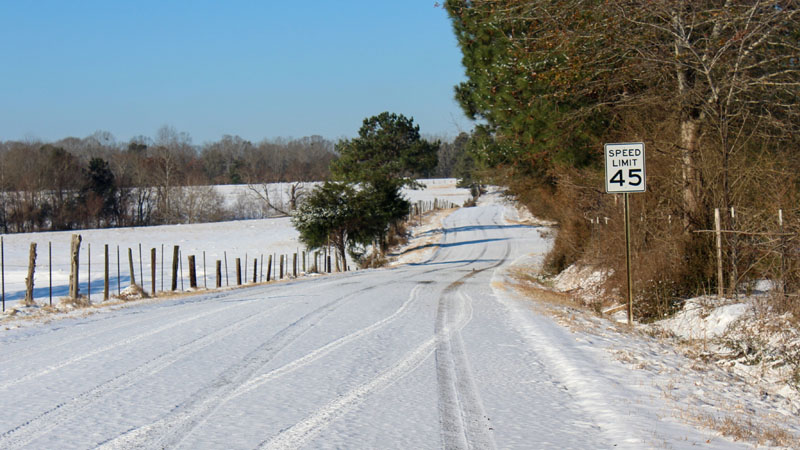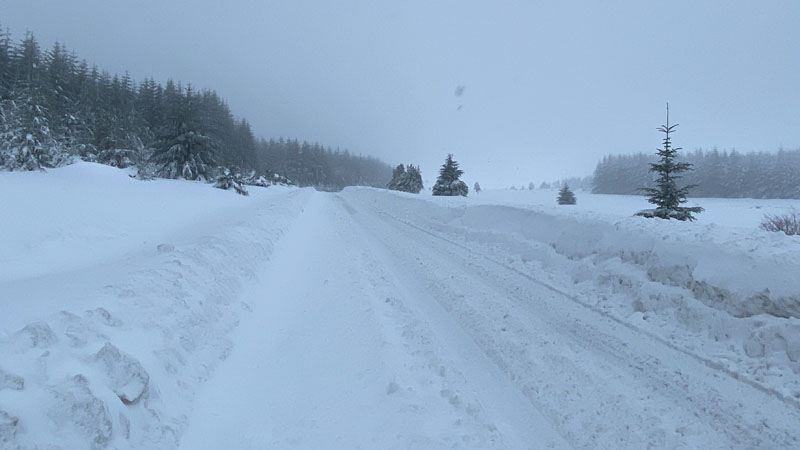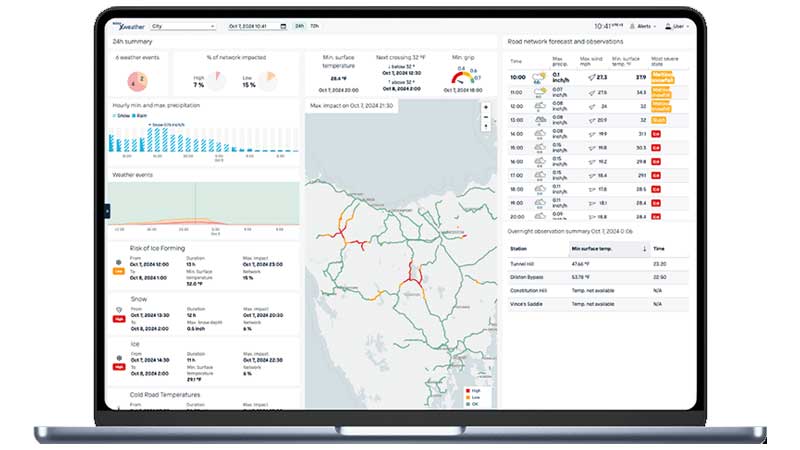From isolated observations to full network awareness: How Xweather Horizon transforms winter maintenance
Winter maintenance decision-makers today face challenges that would have been unimaginable a decade ago. The proliferation of data sources — from traditional weather stations to IoT sensors, mobile sensors, and connected vehicles — has created both opportunities and complexities in how we approach road safety during adverse weather. Here’s how Vaisala Xweather Horizon addresses these issues by providing a comprehensive, integrated solution that transforms raw data into actionable intelligence.
The data paradox in modern winter maintenance
One of the greatest challenges facing winter maintenance teams is the "data paradox." More data should lead to better decisions, but many operations now struggle with:
- Data fragmentation from multiple disconnected systems
- Geographical gaps between fixed observation points
- Forecasts that update infrequently and don't incorporate real-time observations
- Difficulty translating abundant data into clear action plans
These challenges can lead to either decision paralysis or overly simplified approaches that ignore network nuances — neither of which serves the goal of maintaining safe roads while minimizing environmental impact and costs.
The critical need for network-wide intelligence
Traditionally, road weather systems focused on specific observation points, with treatment decisions extrapolated to entire domains or regions. This approach has inherent limitations in capturing microclimatic variations.
Without a complete network view, decision-makers face impossible choices: Either treat entire areas based on worst-case scenarios (wasting resources) or risk undertreating areas not represented by observation points. Xweather Horizon solves this by combining all the data from local observations with advanced forecasting capabilities. This gives insights across the entire road network, allowing precise treatments where needed.
Enhanced forecast parameters for actionable intelligence
Forecasted grip values also help measure how severe a weather event will be. This helps plan a response based on expected impact rather than just the presence of hazardous conditions.
The result is a multi-dimensional view of upcoming weather impacts which helps to quickly distinguish between minor events requiring minimal intervention and severe conditions demanding a more comprehensive approach.
How continuous data integration transforms forecasting accuracy
When forecasts run infrequently in isolation from the latest observations, they inevitably drift from reality during rapidly-changing conditions.
Xweather Horizon solves this through a continuous feedback loop — refreshing forecasts every 10 minutes at observation points and every 30 minutes across the network. Each update incorporates the latest observed data to both initialize and constantly ‘quality-check’ the forecasts.
This approach significantly reduces forecast drift and ensures decisions reflect current conditions. This empowers decision-makers to make the call when convenient rather than waiting until a new forecast has arrived.
Observations and modeling: An ideal pairing
High-quality observations from reference-grade equipment provide the foundation for accurate modeling, while sophisticated techniques extend the value of observations beyond their specific locations. This symbiotic relationship creates a system greater than the sum of its parts, delivering insights neither approach could achieve independently.
Vaisala road weather modeling technology has already been proven in demanding applications beyond winter maintenance. Major automotive manufacturers rely on the same modeling capabilities to enhance vehicle safety systems and provide drivers with advanced road condition alerts.
Real-world applications: Xweather Horizon in action
The evolution in road weather intelligence isn't just theoretical — it's already delivering practical benefits to winter maintenance operations with different starting points and constraints. Agencies find that smart sensor placement and network-wide intelligence improve winter maintenance efficiency and effectiveness.
This past winter, customers worldwide have enjoyed the benefits of Xweather Horizon, using its features to fit their needs. This solution has shown that it can work well in many different situations.
Using a hybrid approach with route-level intelligence: Several organizations have integrated Xweather Horizon into their existing RWIS infrastructures to expand monitoring capabilities and gain more granular insights. By strategically placing IoT sensors, they have increased observation points and configured Xweather Horizon to provide route-level intelligence. This allows for highly targeted decision-making, optimizing treatments route by route instead of using a one-size-fits-all approach.
Blending traditional and emerging technologies: Agencies are modernizing RWIS networks by expanding and enhancing with IoT sensors and Xweather Horizon's intelligence instead of full replacements. This flexible approach allows for wider coverage, better resilience and precise insights, while keeping the benefits of existing systems. The shift toward scalable, adaptive networks meets today's needs for winter maintenance and road safety.
Where data abundance often leads to confusion, Xweather Horizon stands out as a beacon of clarity and precision. By seamlessly integrating real-time observations with advanced forecasting, it transforms the fragmented data landscape into a cohesive, network-wide intelligence system. This not only optimizes resource allocation but also ensures that every road, no matter how remote, receives the exact treatment it needs. As winter maintenance evolves, Xweather Horizon is not just a tool; it's a necessity for staying ahead of the storm.



